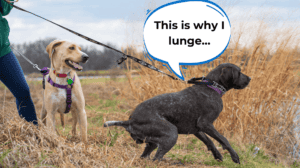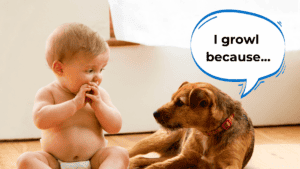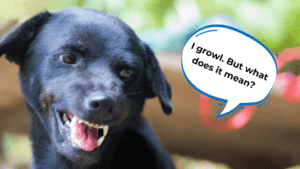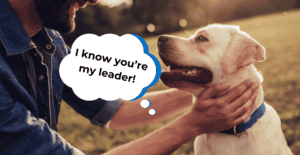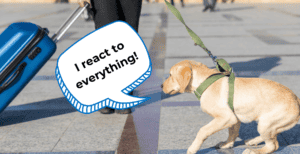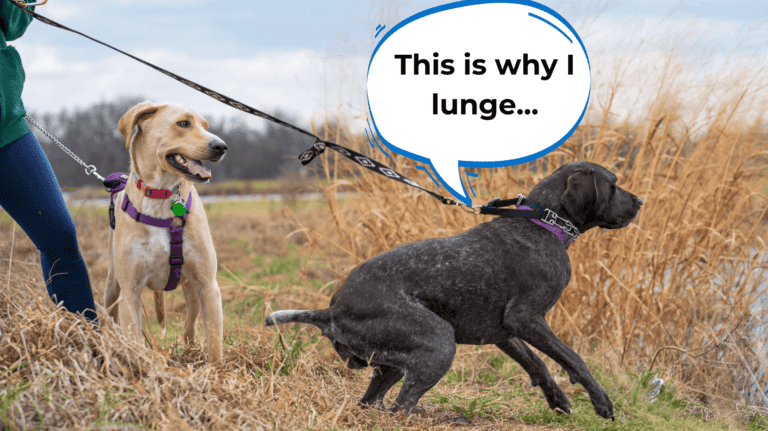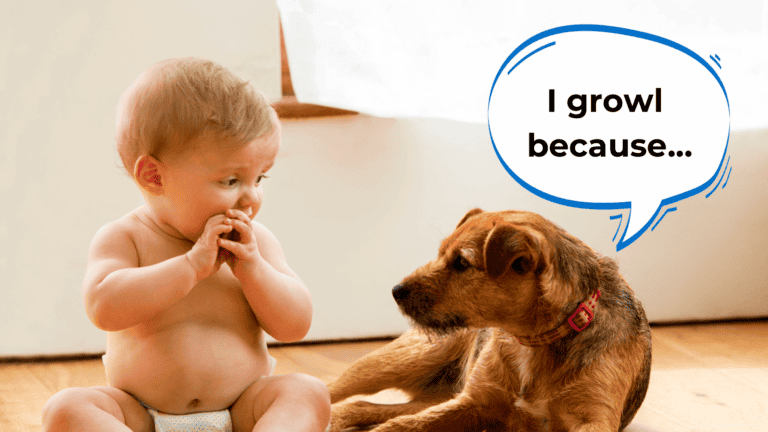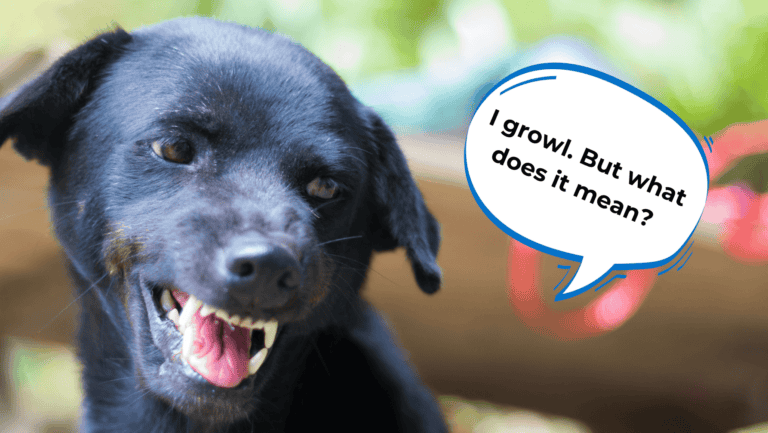In this blog, I highlight the important factors to a dog's leash reactivity and how you can turn a leash-pulling dog into a dog that walks calmly.
It's understandable why having a dog pulling the leash can be such a pain! If all you want is to enjoy a quiet, peaceful walk with your dog, the constant struggle for control can be exhausting.
Why do dogs do this? Why do other dogs not do this? Why is there even a power struggle? And should you — as a dog owner — persist?
Read on to learn more.

Key Takeaways
- Understand the Instincts: Dogs pull on the leash due to instincts derived from their wolf ancestors, seeing walks as a time for hunting and leading. They will naturally take the Leadership role if they don't sense a leader, hence the pulling.
- Be the Capable Leader: To stop leash pulling, you must establish yourself as the leader in all aspects of your dog's life, not just during walks. This means setting boundaries, giving consistent consequences for pulling, and showing calm, assertive energy.
- Prepare and React Appropriately: How you start the walk sets the tone. Go out first, decide when to walk, and be ready with calm responses to pulling, like pauses or changing direction. Letting your dog lead or not giving consequences encourages pulling.
Table of Contents
Dog Leash Reactivity: Understanding Why a Leash Reactive Dogs Pull the Leash Right Before You Start Your Walk
How do you tell if your dog is leash-reactive or not? One of the significant signs you have a leash-reactive dog is when they become overreactive, uncontrollable, and hyperactive once they're on the leash.
While other dogs calmly follow their owners, a dog with reactivity issues will pull, pull, and pull. No matter how much you command them to stop, the pulling never ceases.
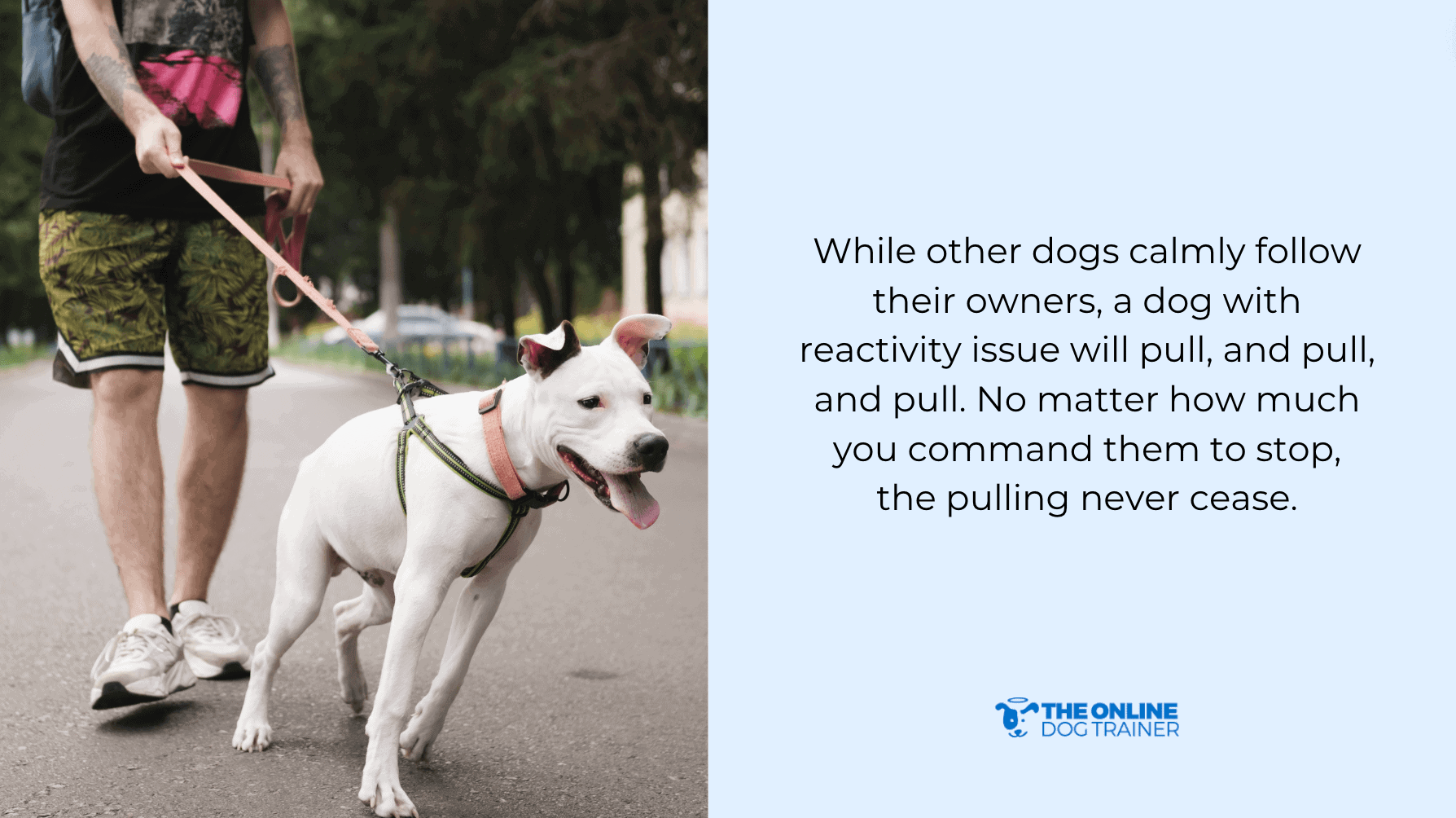
You walk to the door; your dog is already pulling on the leash.
You step outside down the stairs, and your dog pulls and pulls as if telling you to “Hurry up!”
Your time outdoors is all about having to regain control of the leash.
But what is the reason behind a dog's reactivity that causes them to pull the leash at the start of every walk?

Let me answer that using dog psychology.
You see, our dogs have the DNA of a wolf — 99.98%, to be exact. Why is this significant? Because how your dog acts can be connected to how wolves act in the wild.
For the wolves, everything is about survival. When they head outdoors, a walk is not just a walk; it's all about hunting for food. Outdoor walks test a dog's ability to survive.
The most interesting thing about wolves is they don't push through with their walk until the one who leads — the pack leader — steps in to lead the way, signals “Let's go!” and goes on to make all the big decisions.
Even though our dogs have become more domesticated than their ancestors, they still think like wolves.
Someone has to lead, someone has to decide, someone has to be followed, someone has to call the BIG shots.

FACT: If your dog doesn't feel like there's a leader in charge, they will take over.
Why?
Dogs, by nature, will always look for the leader, but if that isn't filled, they immediately have to assume the role.
It's hardwired into the DNA.
And leaders lead…thus, your dog is out front, and there is endless leash pulling, especially at the start of every walk.
Have you ever observed your dog becoming more in tune whenever the walk happens? They're gearing up to make the big decisions!
So… what can you do?
To Stop Leash Pulling, You Have to Know That Control Matters to Dogs
Control is a powerful concept in dog psychology!
Why? Because your dog knows control is essential for survival. The one in charge is their protector; the one who tells them how to survive the wild and find food.
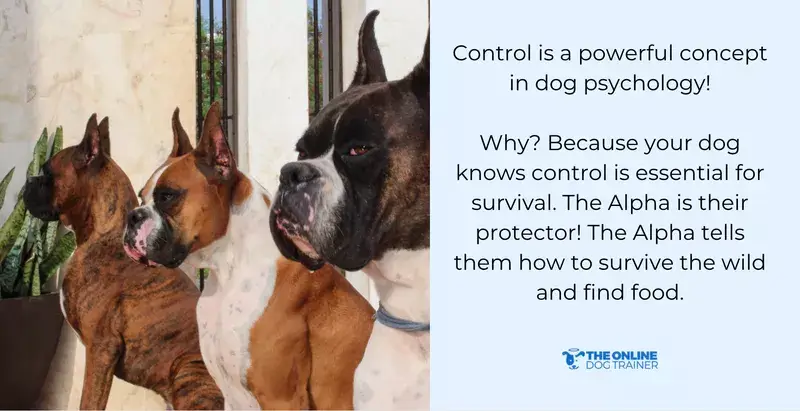
Your dog pulling the leash shows they have taken the role of the leader. Their pulling sends the message, “I'm making the big decisions now. I will tell you what to do!”
So when your dog pulls the lead, they aren't deliberately disobeying you or getting on your nerves.
They pull the lead because they feel they're the pack leader, and they need to make every crucial decision to make the walk successful because that's what pack leaders do.
Other Factors Causing Leash Reactivity in Dogs
Factor #1: Fear
A dog's natural fight-or-flight response is triggered when they perceive a threat.
Being restrained on a leash eliminates the “flight” option which causes the dog to resort to leash lunging and showing aggressive body language in an attempt to defend themselves.
Factor #2: Anxiety
Negative association with the leash or the walking environment can create anxiety. Your dog might feel that a leash is synonymous with danger and they need to fight to survive.
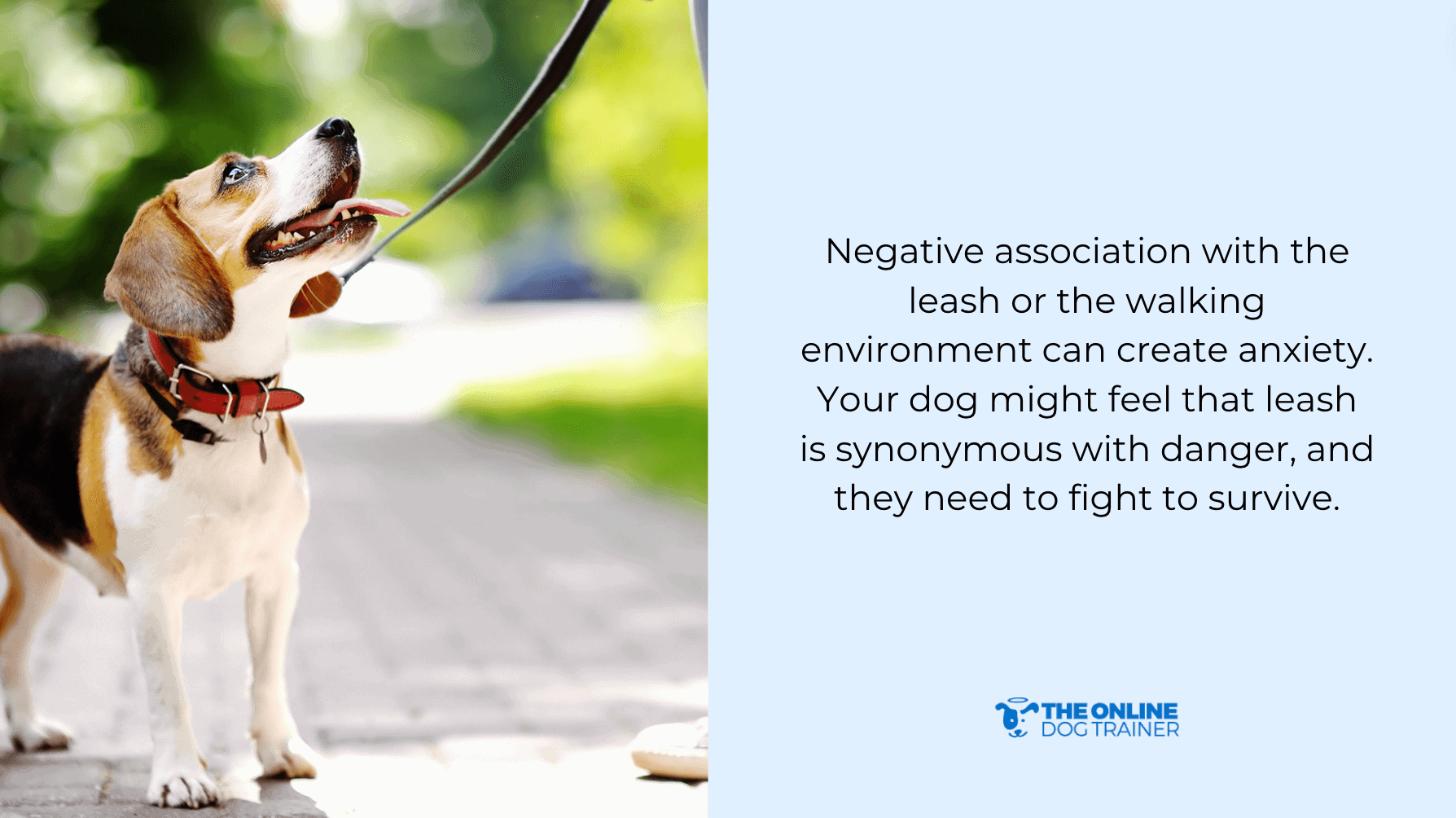
Factor #3: Lack of Exposure
Limited exposure to various stimuli (other dogs, people, bicycles, etc.) can increase a dog's fear and uncertainty. Exposing your dog on your own pace, and not theirs, can also cause the dog to be overwhelmed and refuse further exposure.
Factor #4: Lack of Training
Dogs who haven't been trained to walk calmly on a leash may be more likely to react to stimuli due to frustration or excitement. Consistent training helps establish clear expectations and teaches the dog appropriate responses.
Factor #5: Lack of Socialization
Inadequate socialization during puppyhood can make dogs less comfortable around unfamiliar people and animals. This lack of social skills can contribute to fear-based reactivity when encountering others on walks.
6 Things You Can Do To Stop Your Dog's Leash Reactivity
The biggest solution to stop leash pulling is to actually show your dog they can pass on the hat of leadership to you.
Here are some ways you can do it.
#1: To Help Your Leash Reactive Dog, Be the Leader in Everything
Just as the wolf leads the pack, you need to establish yourself as the leader of your pack. You need to make your dog feel safe, secured, and protected.
I want to be very clear: to stop leash pulling, you need to be the leader of EVERYTHING, and not just of walking outdoors.
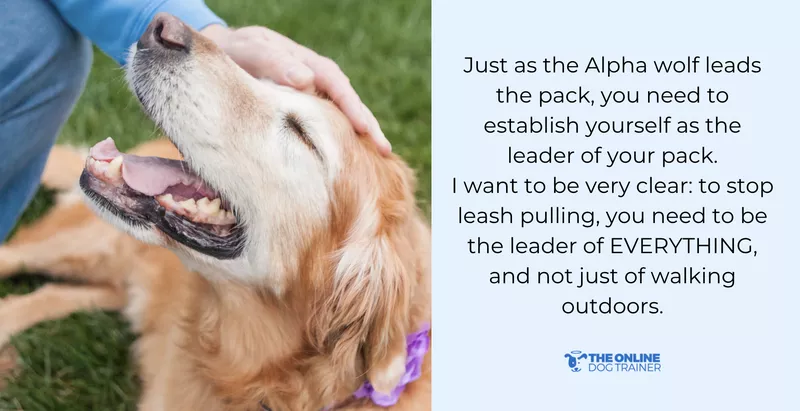
Some dog owners assume they only need to show their authority and leadership during the walk, and what happens before or after the walk doesn't matter.
I 100% encourage you to take charge of everything, from the walk to the feeding to giving affection and attention.

Becoming the leader in your dog's eyes requires an all-round approach, and that's why I made my online dog training program, The Dog Calming Code™️.
This dog training program is dedicated to helping you become an all-around leader in your dog's eyes by guiding you on how to feed dogs, give attention, respond to calls for danger, and how walks should be done.
So when you need to go outdoors, your dog already knows who to listen to!
#2: Set Boundaries and Consequences
When it comes to walking, I recommend these simple options if you're looking for a way to incorporate discipline during your time outdoors.
Consequence #1: The Pause
Do the pause if your dog starts pulling the leash. This consequence is your way of saying, “Hey, we won't continue walking if you keep on pulling.”
Wait 2-5 minutes and see if your dog stops pulling the lead.
Consequence #2: The 180
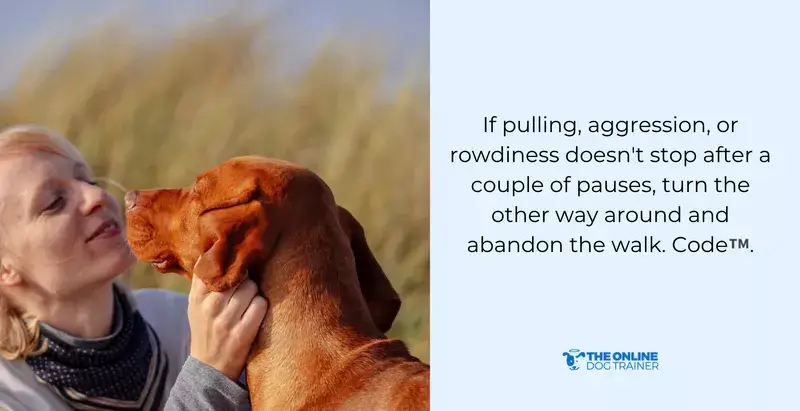
If pulling, aggression, or rowdiness doesn't stop after a couple of pauses, turn the other way around and abandon the walk. I know this could be heartbreaking, especially when your dog has been looking forward to time outdoors. However, doing the 180 can help your dog understand that ultimately, YOU are the decision maker, the one in charge, and they should be listening to you.
Your dog will eventually get it, and will follow habits you expect them to do.
#3: Know What to Do Before Stepping Out of the House
This one is crucial because how you walk out of the house predicts how your walk will go.
Even if you've already shown you're the leader, one power move from your dog can change the dynamics.
What do I mean by this?
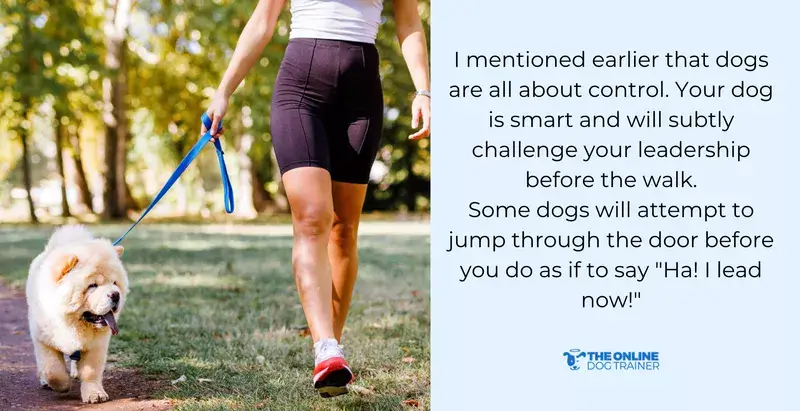
I mentioned earlier that dogs are all about control. Your dog is smart and will subtly challenge your leadership before the walk.
Some dogs will attempt to jump through the door before you do as if to say “Ha! I lead now!”
Sometimes, dogs will attempt to take control by tugging at you, or handing you the leash to tell you “Hey, it's time for my walk!”
In both circumstances, if you give in to your dog, you WILL lose control.
So before stepping out of the house, here are three things I want you to remember:
Tip #1: You Go First
You need to be the CEO of the walk every. single. time.
This concept means if your dog attempts to go in front of you, you calmly lead them back to your side to walk WITH you.
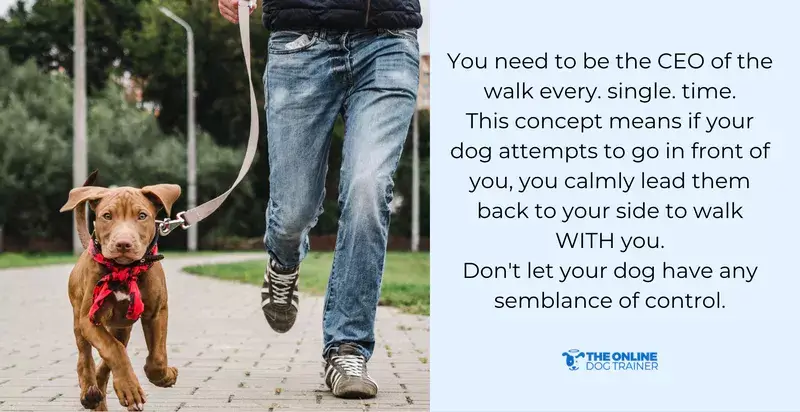
Don't let your dog have any semblance of control.
Tip #2: You Decide When To Go for a Walk
I talk more about this in my blog about the Doggy Dan Rule #5: How to Walk Your Dogs.
The main principle: the go signal comes from you and not from your dog.
Sure, your dog will attempt to convince you to bring them outside whenever they want. This could be tempting, especially when they can't hide their eagerness. But stay strong, furmom and furdad.
Ignore the request for a few minutes then call your dog. Doing this establishes that you — not them — decide when the walk should happen.
Tip #3: You Decide If A Walk Should Actually Happen
Keep an eye on your dog's behavior to see if you should push through with the walk.
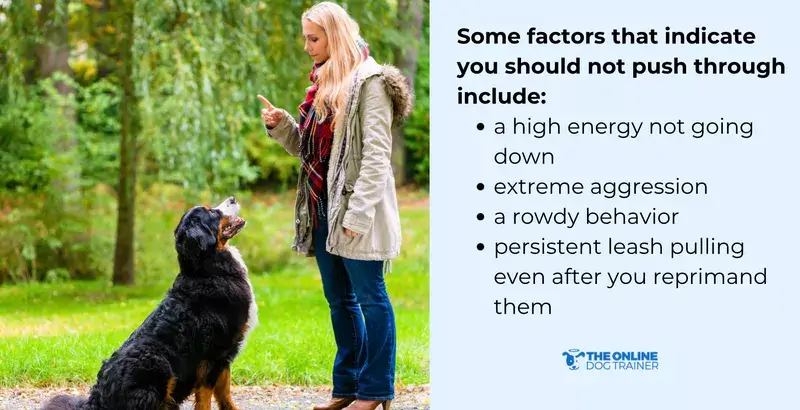
Some factors that indicate you should not push through include:
- a high energy that doesn't go down
- extreme aggression that could harm others
- a rowdy behavior that doesn't respond to commands
- persistent leash pulling even after you reprimand them
If you see these factors in your dogs, don't hesitate to call a rain check on your walk.
#4: Stay Calm
Your dog can sense your emotions, so if you're tense or frustrated, they'll pick up on that and may become more difficult to manage. Keep your cool, even when they're testing your patience. A calm demeanor reinforces your role as the leader.
#5: Set Your Dog Up for Success: Create an Environment Where They Can Truly Relax
A dog's environment can influence your dog's reactive behaviors, especially when they are consistently exposed to reactivity triggers.
Don't forcefully bring them to places you know can trigger a fearful response. Many owners think exposing their dogs to triggers will eventually lessen their dogs' fears. Unfortunately, not respecting your dog's pace and boundaries can make your well-meaning efforts backfire.
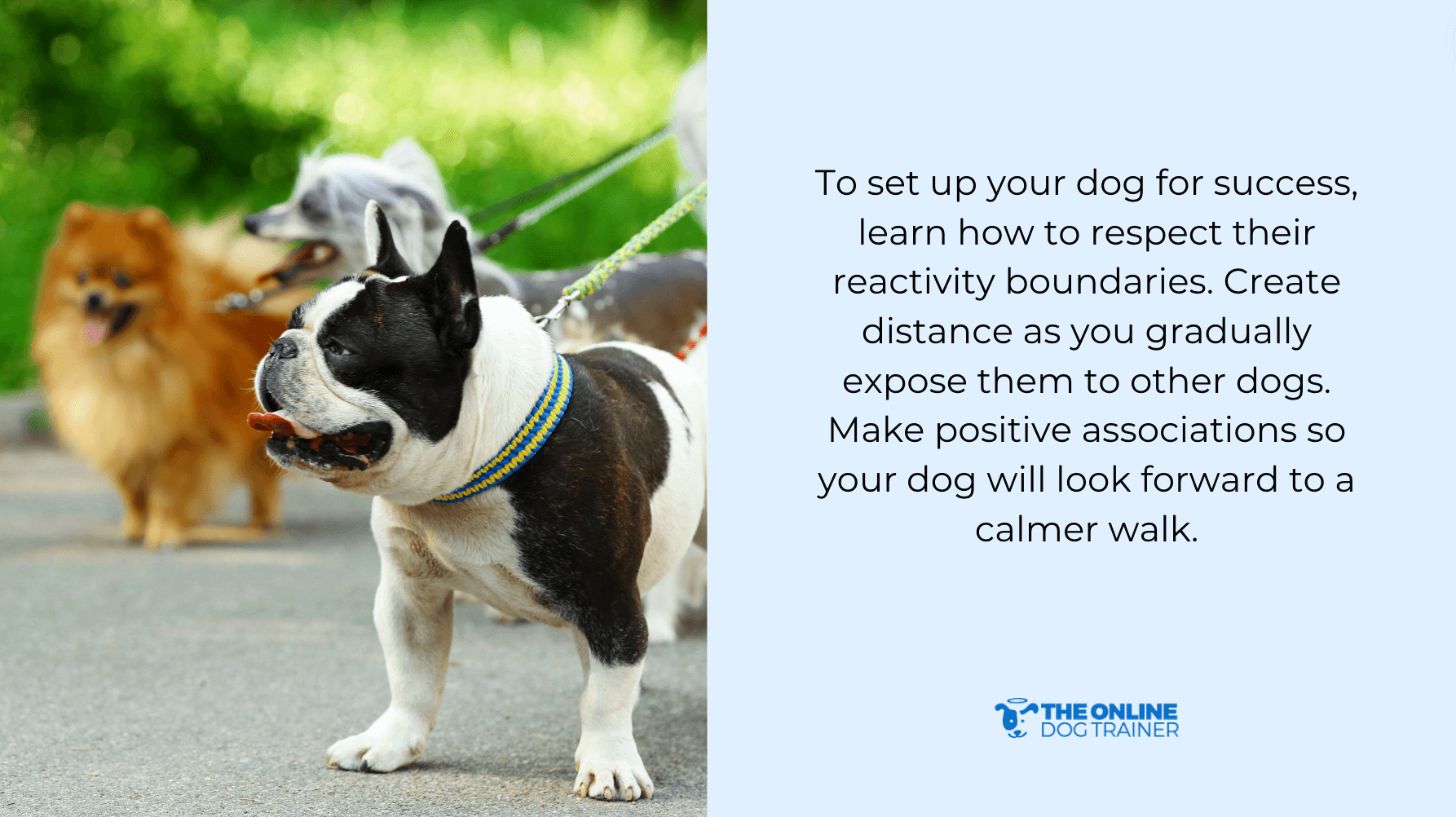
To set up your dog for success:
- Learn how to respect their reactivity boundaries.
- Create distance as you gradually expose them to other dogs.
- Make positive associations so your dog will look forward to a calmer walk.
#6: Consult an Expert Dog Trainer or a Professional Dog Behaviorist
Even if a dog's reactive behavior is more challenging than the rest, I never recommend corrective collars. Shock collars are only a band-aid solution; they simply hurt your dog but do not really solve the issue.
When it comes to leash reactivity, it's crucial to go to the root of the problem: the leadership issue.
A qualified professional or an expert dog trainer can modify behavior by solving the issue at its core.
As a dog trainer with almost two decades of training experience, I have proven that addressing power struggles and leadership issues can help a dog overcome reactivity, even those you'll consider severe cases!
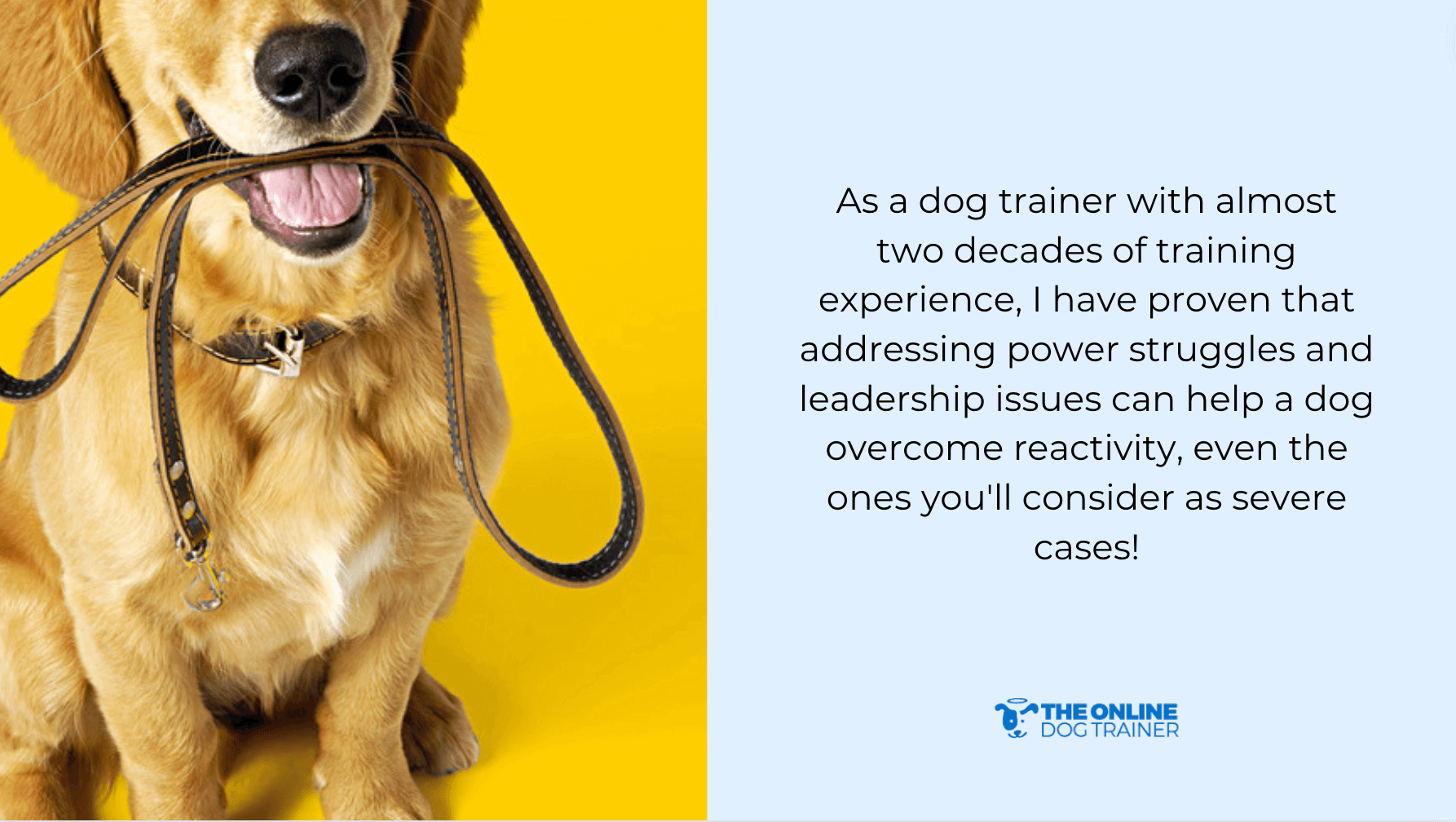
These professionals often provide remedies to deep-rooted causes for dog reactivity, and not just temporary, short-lived solutions.
4 Things You Should Not Do If You Want to Stop Leash Pulling
#1: Get Angry With Your Dogs
Yelling or getting frustrated only escalates the situation.
For your dog, the one who doesn't easily flinch or fold wins and takes the leadership hat.
But what do you do when the constant leash-pulling becomes too much for you?
Being restrained on a leash eliminates the “flight” option which causes the dog to resort to leash lunging and showingaggressive body language in an attempt to defend themselves.
I want you to remember this: give calm, consistent consequences.
A consequence given with calmness can teach your dog what they need to do more than shouting or using force can.
When you're angry, your dog will more likely become stressed, making it hard for them to really understand you.
#2: Giving Up and Letting Your Dog Have Their Way
Before you continue reading, I want you to know I completely understand your frustrations.
I've had conversations with dog owners where I asked them, “What happens during the walk?”
A lot of them said “Well, the leash pulling becomes too much, we just let them lead the way. We figured it was better than abandoning the walk altogether.”
Definitely a big misconception!
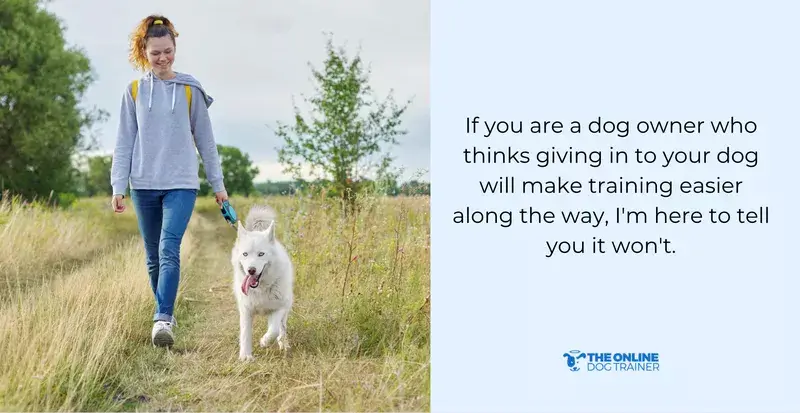
If you are a dog owner who thinks giving in to your dog will make training easier along the way, I'm here to tell you it won't.
When you let the dog control the walk, you're also giving them control over everything.
Dog barks and snaps at everyone and everything? It's because they're in control.
Dog doesn't respond when you call? Why should they listen to you if they're in control?
Dog runs far from you even if you command them to stop? Again, you're not in charge.
If you give dogs control, everything will be on THEIR terms, not yours.
#3: Not Giving Consequences
If there's no consequence for bad behavior, there's no reason for your dog to stop. Consequences are essential for both your puppy, and your adult dog.
Even though our dogs can be prone to showing headstrong tendencies, they are quick learners and learn through consequences.
Giving them consequences helps them understand what they should and should not do. It's the best way to build your dog's best walking habits.
#4: Letting Your Dog Make the Decisions
You're the leader, not your dog.
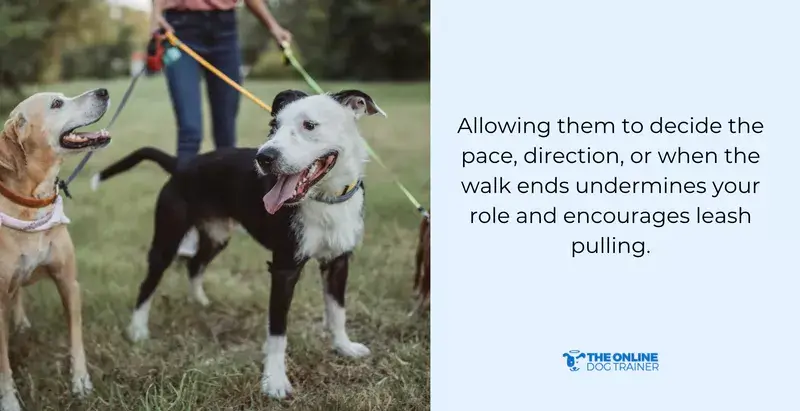
Allowing them to decide the pace, direction, or when the walk ends undermines your role and encourages leash pulling.
Show them you're the leader in charge by letting them know “Hey, you can chill. I make the big decisions here.” And stick with it.
Stop Leash Pulling By Being the Strong, Smart, Confident, and Loving Leader. The Dog Calming Code Will Help You!
The entire concept of dog leadership includes a lot of concepts, and it's easy to fall into the cracks when you're working to become a true leader in your dog's eyes.
I created The Dog Calming Code for dog owners who really want to set the leadership right. The Dog Calming Code discusses the Five Golden Rules of dog leadership; five essential concepts that — when done right — will cement your place as the Dog Parent your dogs WILL trust.
Because when you're a capable leader, you won't only be able to stop leash pulling; you can always enjoy a peaceful, calm, successful walk.

~Doggy Dan




